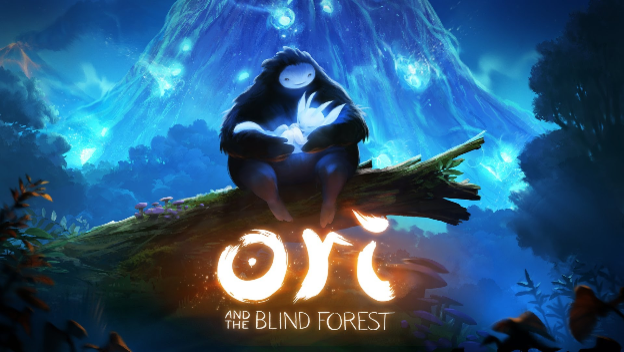Ori and the Blind Forest is an indie game by Moon Studios, the first game they’ve made thus far and I definitely hope they make plenty more. The opening ten minutes of this game pull at your heartstrings like very few games manage to do in so little time. I would like to examine how Moon Studios does this through their animation of expressions, body language, sound, and visual narrative. I think larger companies, I’m looking at you Ubisoft, can learn from Ori and the Blind Forest in how to develop characters properly.
First and foremost, the expressions of the main character, Ori, are exaggerated not only to make sure the audience can see them, but to convey the strength of the emotions Ori is feeling. That, and there’s nothing like big ears and eyes to make a creature adorable – excluding an aye-aye, perhaps. Speaking of which, there is also nothing more expressive than eyes and ears. By giving Ori large bunny-like ears that rise and fall, Moon Studios is able to show very clearly what mood Ori is in. Not that video games should start featuring more animal-like characters, but I think his ears are in lieu of shoulders. Ori is far too small to show any real slouching or tensing, as both have a great deal to do with muscle movement. In a human figure, animating that is difficult to say the least. However, there are tricks to exaggerating such movement without inserting too many points of motion. For example, the wardrobe of the character can speak volumes for them. If the character is generally happy, like Sora from Kingdom Hearts , the lightweight quality of his clothes as they nearly bounce with every breath he takes, show quite clearly Sora’s lighthearted outlook on life. Ori, however, we might say is generally sad or more accurately “hopeful”. Hope is a pretty complicated emotion to display through body language, however I would say even if you were to judge simply by the state of Ori’s ears and eyes, it is obvious. His ears are almost always between drooping and perking up, the perfect state of confusion for “hopeful” but not hopeless. His eyes are nothing more than black pools, but their shape changes almost constantly – reflecting the state of his ears in a very endearing way.
Secondly, Ori’s body language when he walks, runs, and jumps conveys a lot about his character too. During his time with Naru, Ori bounces with nearly every step and chirps happily throughout the happy summer scene. This changes as the game goes on, of course, but for the introduction scenes, Ori is clearly a happy creature.
Thirdly, and the most important of all, is the visual narrative itself (I’m going to use the term “visual narrative” instead of mise en scene because video games use this tool differently than films do). Take the opening shot of Ori immediately after Naru embraces him in the storm. Ori awakes in a bed of hay, with yet another of those adorable chirps, and the player can see he is surrounded by evidence of Naru’s love. The alcove is lit very warmly by the summer’s sun and a small lantern hanging from the ceiling. Both lend a yellow and red glow to the scene, both colours speaking of comfort and home. Above Ori’s bed is a small dreamcatcher, implying that Ori sleeps restlessly on occasion and the care Naru took to make the object and hang it. Furthermore, there is a drawing on the rock of Ori and Naru, with Naru’s hand on Ori’s shoulder. If nothing else, this is the most obvious sign to the player that these two creatures share a very close bond. As a character, Ori has just went from a leaf made of light to a small creature who loves his caregiver very deeply and is loved just as much in return.

The story goes on, however, and we discover that Ori would do almost anything to keep Naru happy. Just like a very brave child, he goes out to bring back more apples for Naru, in hopes that she will eat. She does not, and though he tries to wake her, she suddenly falls limply. In one of the most powerful moments in the entire game, Ori realizes that Naru is gone. The devastation in Ori’s expression is heartbreaking, more so as Ori mourns his loss. If that didn’t have you bursting into tears, when Ori is wandering the forest alone you will for sure. The player has to push Ori to go on, even though his progress gets slower and slower. Weakened further, Ori struggles through a briar wall and falls, breaking his leg. The next few painful moments are watching Ori drag himself to just keep going before he finally dies. This is a creature extremely unwilling to give up, a winning quality in any hero.
The point that larger companies need to be learning from this beautiful game is that the animation of a character and visual narrative are much more effective tools than simply telling the player they should care through narration or in-game text and fiction. Ori and the Blind Forest convinces the player to be emotionally invested in the main character in a matter of minutes through expression, body language, and visual narratives.
